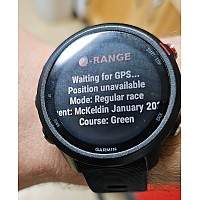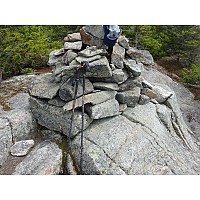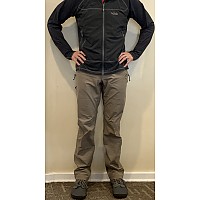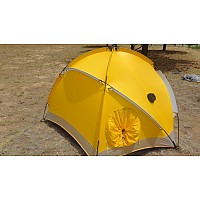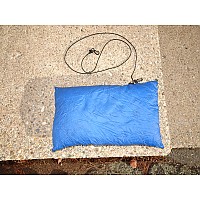Eureka! Amari Pass 1
The Amari Pass 1 has been discontinued. If you're looking for something new, check out the best three-season tents for 2025.
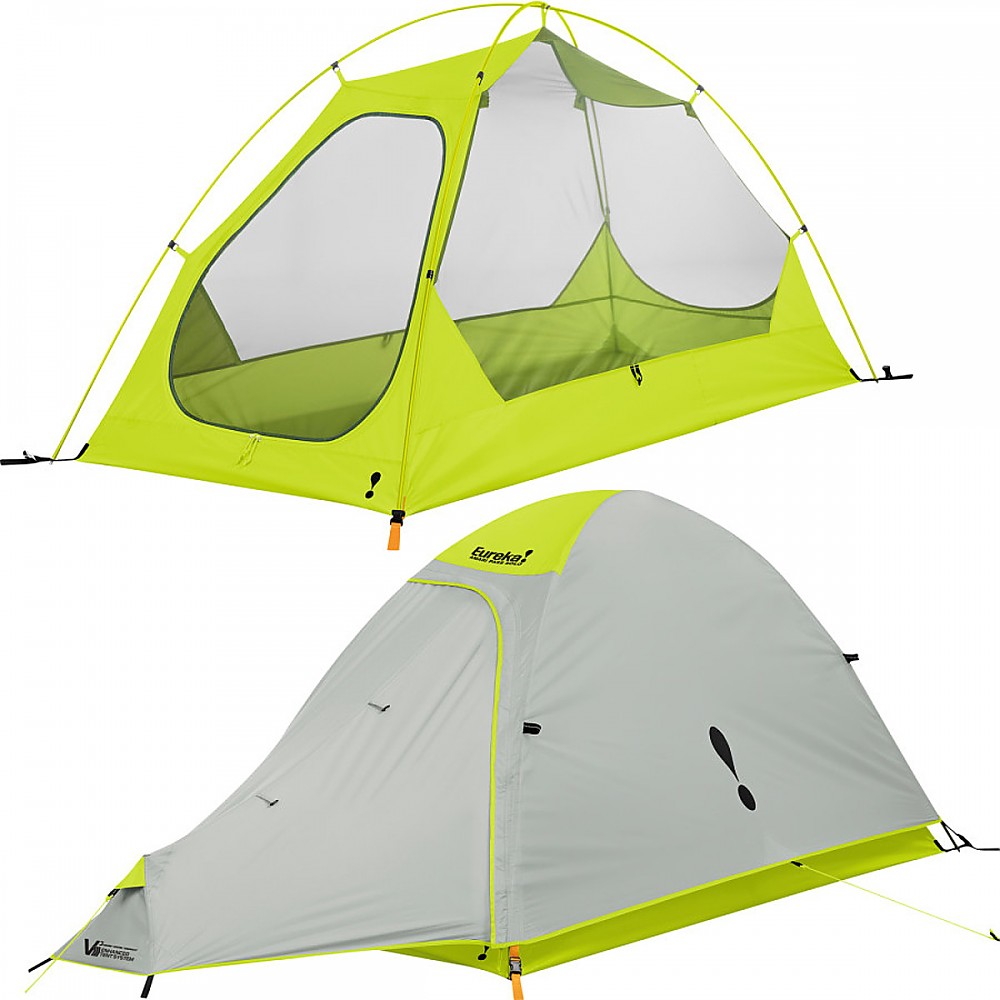
Overall, the Amari Pass Solo is a good backpacking tent. It is roomy and the price will not break your bank.
Pros
- Easy to set up
- Roomy
- Inexpensive
Cons
- Heavy
- Poor handling of condensation
- Packablity
The set up of the Amari Pass Solo is extremely easy. Pole clips on the outside of the tent make it so you don't have to thread the poles through sleeves. It does not come with a footprint but the dimensions of the tent are small enough to where finding a lightweight footprint material is not hard.
The stakes are made of a flimsy aluminum, so depending on where you plan to use the tent and in what conditions, it is recommended you buy more durable stakes. The poles fit together easily and have removable pegs on the ends. The pegs fit into 1/4'' grommets that are sewn into flaps on all four edges of the tent.
Stability wise, the Amari Pass Solo does its job. The clips that attach to the poles pitch tautly, but I have noticed after months of use that the fabric has stretched out a bit which causes the tent to not pitch as tightly as it did the first time I took it out of the box. However, if the tent is not properly staked down, it will shift in the wind and with general moving around during the night. When properly staked down, it will survive through high gusts of wind, providing that the removable rainfly is clipped in securely (the rainfly attaches to the tent using plastic clips).
The Amari Pass Solo handles moisture variably depending on what kind of conditions it is used in. In heavy rain, the rainfly performed above and beyond, although I noticed moisture accumulating on the underside of the floor. The rainfly has one vent at the very top. The rainfly/vestibule also has this odd "V3" technology that Eureka says adds volume and ventability to the tent but I cannot for the life of me figure out how it works, even after watching videos and trying to no end to use it. It has a small 6'' pole sewn into the end that is supposed to remain upright when stacked down, but I have not figured out a way to make it work.
One major drawback of this tent is its ability to properly ventilate. On clear nights, the tent does great without the rainfly. But putting on the rainfly on a warmer night when the humidity is high leaves you waking up with dew on your sleeping bag and on the inside floor and also with dew on the roof. This is a major drawback for me, as I use this tent a lot in Georgia, where the humidity is usually always high.
The tent comes with one small removable gear loft that attaches to the roof and two sewn into the sides (when you crawl in), good for a headlamp, knife, book, etc. The thing I am most happy with on this tent is the room. With a lot of solo tents, room can be an issue, but the Amari Pass Solo has 3'2'' of sit up room, which is more than enough for me (I am 6'0'' and I can fully sit up while in a sleeping bag and on top of a 1'' inflatable pad). The floor is a roomy 3' width and 6'10'' length that will accommodate many different sizes of person with a floor space of 18.2 sq feet. The vestibule is large enough (5 sq feet) to fit a 60L backpacking pack, although this makes it hard to get in and out effectively.
The tent's packability leaves much to be desired. The pack size is 5'' by 16'', rather large for a backpacking tent. When I store this in my 60L pack for longer excursions, the tent takes up almost half of the inside of my pack. It packs down a bit smaller if you roll the poles and stakes up with the tent and rainfly, but this also bulks the tent up a bit for storage.
The Amari Pass Solo is a very efficiently designed tent despite some of its drawbacks. Not a lot of dangling and removable parts allows for seamless entry into the tent and I've never had any problems with putting on the rainfly, clipping the poles, zipping/unzipping the door, and being able to get in and out.
Overall, the tent has held up to the abuse I've put it through. I've used this tent while hiking the 80 mile Georgia part of the AT (done it three times), used it in flood conditions on 40 miles of the Florida trail, used it in general weekend camping, and used it car camping numerous times. I had yet to have to repair the tent in any way, although it have noticed some loose stitching near the door which I may have to repair soon.
All in all, I would say this is a good beginners backpacking tent. I would not recommend for longer trips where you need something that's not going to break your back. At around $100, it's a bang for your buck that will last you a good while.
Source: bought it new
Price Paid: $109.99 USD, on sale
As for the packabilty of this tent, I found that it gets much smaller and manageable on long treks if you pack the poles on the side of your pack separate from the rest. Wish there was a window in the rain fly. But overall a great tent.
Pros
- Packability/weight
- Cost
- So far so good, I camp a lot
- Packability/weight
Cons
- No window on the rainfly, yay bears in ADK
- Neon green but it grows on you
- No window on the rainfly, yay bears in ADK
I have both the solo and 3-person versions. For some reason Eureka U.S. doesn't sell a footprint, but I've ordered/received footprints for both tents from retailers in Canada, though the U.S. company denies their existence.
They seem to fit well and are made of exactly the same material as the tent floor.
GREAT TENTS overall!
Source: bought it new
Price Paid: $100 (solo), $180 (3-person)
Very good tent, but needs floor saver additionally.
Pros
- Very comfortable (size, ventilation, pockets, and features)
- Nice looking
- Easy to set up
Cons
- Very fragile bottom, needs footprint
- Heavy
Overall the tent is very good. I didn't give five stars because of one thing. This tent has a very fragile bottom. I'm afraid it can be torn easily without placing below a floor saver, and it is extra weight.
All other parameters are good:
Setup: Very easy. Even dummy can set it up qickly. Good quality strong stakes.
Setup2: Because of size you can place it everywhere, in mountains there are many places where you can hardly place a big tent. Trekkers will guess what I mean.
Stability: Tent seems to be super stable. Equipment and number of attachment points can easily handle even far bigger tent.
Weather Resistance: It can hold heavy rain. Many attachment points gives you possibility to stretch it well.
Ventilation and size: Perfect
Source: bought it new
Price Paid: $122.99
Your Review
You May Like
Specs
| Price |
Historic Range: $83.97-$139.95 Reviewers Paid: $100.00-$122.99 |




